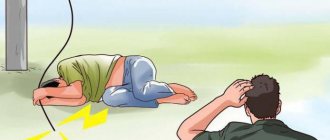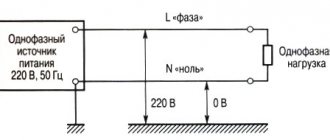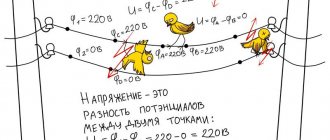In 2022, it is difficult to imagine life without electricity. In today's modern society, it provides everything in our lives. We rely on it every day in the workplace, while traveling and, of course, at home. Although most interactions with electricity occur without incident, electrocution can occur in any environment, including industrial and construction sites, manufacturing plants, or even your own home.
When someone has suffered an electrical shock, it is important to know what steps to take to help the victim. In addition, you need to be aware of the potential risks associated with helping an electrical shock victim and how to help without putting yourself in harm's way.
When an electric current touches or passes through the body, it is called an electric shock (electrical injury). This can happen anywhere there is electricity. The consequences of electrical shock range from minimal and harmless injury to severe injury and death. Approximately 5% of burn unit admissions are due to electrical injuries. Anyone who suffers a high voltage shock or electrical burn should seek medical attention immediately.
Physiological effects of electric shock
Physiological effects vary at certain currents
Note that voltage is not considered here. The electric shock is relatively more severe if the current increases
For currents above 10 milliamps, the muscle contractions are so strong that the victim cannot let go of the wire, which shocks him.
At values above 20 milliamps, breathing becomes difficult and finally stops completely at values around 100 mA. Doctors say that at a current of 100 milliamps, the heart experiences ventricular fibrillation - uncoordinated twitching of the walls of the ventricles of the heart, which leads to death. Just above 200 milliamps, muscle contractions are so strong that the heart muscles are forcibly squeezed. This clamp protects the heart from ventricular fibrillation and increases the victim's chances of survival.
In some US states that carry out the death penalty, the electric chair is used. The electric chair uses a voltage of 2700 volts and a current of 5 amps for 15 seconds. The rules of use include up to three cycles of exposure. There are known cases where sentenced prisoners survived after three cycles of using the electric chair.
What current is safe
Thus, there is no absolutely clear answer to the question “what current is safe”.
In this case, you also need to remember Ohm's Law: current is equal to voltage divided by resistance. Body resistance ranges from MΩ (mega ohms) to kΩ (kilo ohms), depending on skin type, dryness and where the wires touch on the body.
The main types of damage resulting from exposure to electric current
Electrical burns are the most common electrical injury and occur as a result of the local impact of current on tissue. There are two types of burns: contact and arc. A contact burn is a consequence of the conversion of electrical energy into thermal energy and occurs mainly in electrical installations with voltages up to 1,000 V. An arc burn is caused by exposure to an electric arc that creates a high temperature. Arc burns occur when working in electrical installations of various voltages and are often the result of accidental short circuits in installations above 1000 V and up to 10 kV or erroneous personnel operations. Damage occurs from a change in the electric arc or clothing that catches fire from it.
Electric signs are gray or pale yellow spots that appear on the skin. There is a kind of necrosis of the upper layer of the affected area of the skin and its hardening like a callus. Electrical signs are usually painless and disappear without a trace with treatment. Signs after electric shock appear in approximately 11-20% of victims.
Metallization of the skin is the penetration of tiny metal particles into it when it melts and splashes in the event of an electric arc. Metal can also penetrate the skin due to electrolysis in places where a person comes into contact with live parts. Occurs in approximately every tenth victim. Over time, the affected area of the skin regenerates and acquires a normal appearance and elasticity. However, when the eyes are damaged, treatment is ineffective and blindness occurs as a result of the injury.
Electroophthalmia is inflammation of the outer membranes of the eyes as a result of exposure to ultraviolet radiation from an electric arc. Characteristic manifestations of the disease: lacrimation, partial blindness and photophobia; pain in the eyes usually lasts for several days.
Mechanical damage is manifested under the influence of current by involuntary convulsive muscle contractions. This can lead to rupture of skin, blood vessels and nerve tissue. Such injuries occur upon contact with voltages below 380 V, when a person does not lose consciousness and tries to independently free himself from the current source.
Return to content
Interesting facts about electricity
- In order to extract electricity from a magnet from a speaker, two copper wires are wound around it, their two ends are soldered together, and a small light bulb or LED strip is connected to the remaining ones. In order to make a power source for a 220 V incandescent lamp, more powerful and larger magnets and thick copper wires of large cross-section are used.
- The oldest battery is considered to be a device found during excavations in Egypt, which is a copper vessel with an iron rod inserted into it that does not touch the walls.
- In order to show how electricity is generated and flows, at the court of King Louis XV they conducted an experiment with a Leyden jar and a formation of soldiers: the soldiers holding hands formed nothing less than the world's first full-fledged living electrical circuit;
- Due to the large number of deaths from lightning in Italy in the 18th century, a very strange fashion for hats and umbrellas with lightning rods appeared in many European countries;
- In Scandinavian countries, the main, and sometimes the only, source of electricity is hydroelectric power plants. Thanks to this, these countries have very low levels of air pollution.
Knowing how familiar electricity works is very important for every person, not only for the purpose of self-education and broadening one’s horizons, but also to ensure one’s own safety in a world where quite dangerous electricity is found at almost every step.
What is the difference between current and voltage?
If we consider a physical process, electrical energy has many different characteristics, among which voltage and current are most often considered. Let us immediately note that these are not the same thing, but they are both interrelated.
Every substance contains an innumerable number of tiny atoms in which electromagnetic interaction occurs between a positively charged nucleus and negatively charged electrons rotating around the nucleus. In the normal state, elementary particles are in balance - the charge of the nucleus is completely compensated by the charges of electrons. But, the influence of an electromagnetic field on atoms causes the most distant electrons to move, and the atoms become unbalanced - they receive a certain charge.
Rice. 1. Atomic structure
Voltage should be understood as the difference between two charges - at one point there is more energy, and at the other less. An analogy can be drawn with communicating vessels: if there is more water in one tube and less in the second, then when they are connected, water from the first will flow into the second. It’s the same with voltage - potentially at each point there is a certain charge of energy created by the electromagnetic field, but until these points are connected by an electrical circuit, the charged particles will not begin directed movement.
Rice. 2. What is voltage
But, with the advent of a connecting chain, the voltage between two points will lead to the directed movement of charged particles. This phenomenon is called electric current.
Depending on the characteristics of the electrical energy source, voltage and current can be:
Therefore, current cannot flow without the presence of voltage in a section of the circuit, but it is the current that determines the intensity of the impact of electrical energy on a person.
Disadvantages of AC
When transmitting the energy of a current changing direction over long distances, difficulties arise. The creation of the Unified Energy System revealed a number of shortcomings:
- the capacity of cable lines is low due to the capacitance between the conductors and the ground;
- when merging and looping system branches located at large distances from each other, it is impossible to synchronize stations;
- The threshold stability limit required for coordination ends at line lengths exceeding 500 km, which requires an increase in voltage to 450 kV, which leads to an increase in the cost of terminal equipment.
For your information. When the voltage increases, a corona discharge occurs near the overhead lines. This is the process of ionization in conductors with a small radius. To prevent electricity from draining in this case, it is necessary to increase the diameter of the wires, this leads to an increase in the cost of the line.
Hazards of AC and DC Current
It is known that electric current can be constant or variable, but not every resident understands the difference between them and knows which has a more serious effect on the body. When asked which current is more dangerous, experts answer – alternating.
This is explained by the fact that a direct electric current must be three times more powerful than an alternating current in order to be deadly to human health. Variable – faster and stronger, which has a greater effect on nerve endings and muscle tissue (primarily the heart). The electrical resistance of people is covered by direct current power (no more than 50 milliamps). In the case of alternating current, the limit drops to 10 milliamps. If the electrical voltage reaches 500 volts, then both types of current cause equal harm. If the indicator rises, constant electric current is more dangerous in such a situation.
Electricity spreads throughout the body only if there is a point of entry and exit for the current. That is, you need to touch two electrodes at the same time. We are talking about bipolar connection or contact with one electrode. If a part of the human body is grounded, then such a connection is called single-pole. There is also a partial switching on, in which a person isolated from the ground touches opposite poles. In this case, it will pass through the switched-on segment of the arm, and this, as a rule, is not a dangerous current. If there is a high voltage, then an electric shock can strike even if there is no direct contact with the conductor: that is, at a distance, through an arcing contact that occurs if you approach it. Air ionization is the reason that a person comes into contact with installations or wires through which electricity passes. The current of electricity is dangerous for humans, especially in damp weather, since the electrical conductivity of the air is increased. In the case of ultra-high voltage, the electric arc reaches a length of 35 cm.
Electric current is dangerous for the human body, so basic safety requirements must be observed. It itself can be constant and variable, each affecting a person in its own way. Safe work with electrical installations - compliance with all rules and use of protective equipment.
What are the dangers of electric shock?
When exposed to electrical voltage, the victim always receives a shock, but its consequences can be different: from cramps of the fingers and trembling, from unpleasant sensations of heating and burning to respiratory arrest and cardiac fibrillation (unsystematic contraction) and its complete stop. In the latter case, blood stops moving through the vessels, causing the person to die. In addition, electric current is dangerous for humans, since at certain values of its strength it creates the effect of sticking to bare wires due to excessive stimulation of nerve fibers by electricity. One of the causes of death from electric shock can be mechanical injury as a result of involuntary muscle contraction. Loss of vision may occur due to the impact of the resulting electric arc on the retina.
The skin on the face, neck and back of the hands is most affected by the effects of electric current.
Note! Certain (acupuncture) points on a person’s ears and neck are extremely susceptible to electricity - if they are hit, even a weak current can kill the victim. The passage of an electric charge through a person’s body leaves peculiar marks on it - the so-called
"electrical marks", which are dead skin with a yellow coating, similar to calluses
The passage of an electric charge through a person’s body leaves peculiar o’s on it, which are dead skin with a yellow coating, similar to calloused formations.
Electric current passing through the body leaves its marks
An electrical burn causes redness of the skin at the point of contact with its source, bubbles with physiological fluid inside are inflated, areas of the body become charred and blackened, sometimes pieces of metal or fabric from clothing are literally “melted” into them. Such burn injuries are treated worse than simple thermal burns; they do not always appear immediately - the consequences can become visible after hours, days or even months (therefore, all victims are under the supervision of doctors for a long time).
The most dangerous current is that which enters the areas of the back, hands, temporal and occipital parts of the head.
The extent of health damage from electric shock depends on the direction of current movement inside the human body. As a rule, there are several “routes” for the passage of charge. The fatal path of current for a person is the path from one hand holding a bare wire to the other, because it goes through the lungs, bronchi and heart muscle and causes them to fibrillate. If the victim holds onto a source containing direct current with one hand and stands with his feet on the ground, the route is called “hand-foot”, in which case the electricity disrupts the functioning of almost all internal organs and, of course, the heart muscle. The “road” of electricity through the head to the arms or legs is also fatal: if the victim touches live elements with his head. Sometimes people experience electrical injury from the so-called. “step voltage”, when they are on the ground that receives electric direct current without grounding, it passes through the body only through the legs, the heart does not suffer.
Routes along which direct current passes in the human body
Electric shock - symptoms of damage
- A sudden fall of a person or him, like a doll, is thrown away from the current source by an invisible force.
- Loss of consciousness, convulsions.
- Pronounced involuntary muscle contractions.
- Violation of neurological functions - memory loss, misunderstanding of speech, disturbance of orientation in space, vision, pupillary reaction to light. Damage to tactile sensations.
- Ventricular fibrillation, respiratory arrest - uneven pulse and uneven breathing.
- Burns on the body with sharply defined boundaries.
Signs of current on the skin
They differ in characteristics, shape, color, sensitivity. They are easy to identify by visual observation.
Traces of electric shock on the palm
The shape can be oval, round, linear... Where the middle of the burn sinks slightly inward, which indicates detachment of the top layer of skin. Blisters may also appear at the burn site.
The color is often pale, a pale gray lighter than the surrounding skin.
Sensitivity is characterized by pain at the sites of electric shock.
Also, one of the signs is the deposition of metal particles on the skin: The higher the voltage that strikes a person, the deeper these particles are. And vice versa, if the current voltage is small, metal particles will be on the surface of the skin. The color depends on the metal in the conductor: copper - blue-yellow particles, iron - brown.
History of discovery
The history of studying this phenomenon goes back to the very distant past. So, the first to mention it was the ancient philosopher Thales of Miletus. It was he who, back in the 7th century BC, noticed that amber rubbed on a piece of wool began to attract objects of light weight. However, the development of research in this area stopped there for almost 2.5 millennia. Only in the 17th century was the term first introduced to denote the phenomenon discovered by the Greek philosopher (1600, W. Gilbert), then active research began to study the nature of electricity and the possibilities of its use for the benefit of humanity.
The most significant discoveries and inventions were the following:
- 1633 - German engineer Otto von Guericke invents the world's first electrostatic machine, which made it possible to observe various types of interaction of electric charges (repulsion and attraction);
- 1729 - the English scientist Stephen Gray, as a result of his research and experiments on the transmission of electricity over significant distances, discovered that different materials transmit it differently through their thickness (have different electrical conductivity);
- 1745 - Dutch scientist Pieter van Muschenbrouck invents the world's first electrical charge storage device (the simplest capacitor) - the Leyden jar.
- 1800 - Italian scientist Alessandro Volta invented the first current source - a galvanic cell consisting of round zinc and silver plates, folded alternately in a column and separated from each other by paper soaked in a saline solution.
- 1820 – Danish physicist Hans Oersted discovered the electromagnetic interaction between electric charges and charged particles of different signs.
- 1831 – Michael Faraday discovers the phenomenon of electromagnetic induction
- 1880 - Frenchman Pierre Curie discovers the effect of a crystal generating an electric charge when it is compressed or otherwise changed (piezoelectricity).
At the end of the 19th and 20th centuries, one of the most famous and mysterious scientists who studied what electricity is and created many inventions was Nikola Tesla.
How to protect yourself from electric shock
Of course, it is better to initially protect yourself from electric shock than to later fight for your health or even life. First of all, you need to secure your home.
- Before using household electrical appliances, make sure they are in good working order. Do not use the device if you notice damage to the insulation, cracks or other defects in the housing.
- Do not plug in wet or damp electrical appliances.
- Unplug the appliance from the outlet before removing the back panel.
- Do not use electrical appliances while in water, for example, in a bath.
- It is forbidden to extinguish burning electrical appliances with water without first turning them off.
- If you decide to drive a nail into the wall, make sure that there is no hidden electrical wiring in this place.
- If you find yourself outside during a thunderstorm, do not hide under tall trees, lamp posts, in a metal shelter, or be near power lines.
Electric shock victims were first reported in ancient Egyptian texts in 2750 BC. The culprit was... the fish. Specifically, an electric catfish that is capable of delivering current pulses of up to 360 volts. Later, people began to use this feature of soma to treat headaches, gout and some other diseases. There are also more dangerous species in nature - the electric eel can produce impulses of up to 600 Volts.
Under what circumstances can a person be shocked by electric shock?
During operation and repair of electrical equipment, there is a possibility of contact with exposed live wires. You can get an electric shock by touching two wires with different phases. By contacting one phase, a person becomes a conductor, touching grounded metal structures or standing on a wet floor.
In everyday life, the source of damage is often faulty electrical wiring, broken sockets and switches. Electrical injury can result from faulty insulation of electrical appliances connected without grounding.
Violation of the operation of household electrical appliances
An electric shock can occur without direct contact with a conductor. In conditions of high humidity and close to a source of electricity, insulation breakdown may occur and an electric arc may occur.
Broken power lines cause wires to come into contact with the ground. They are capable of creating a step voltage within a radius of up to 10 m. A potential difference arises between two points on the surface located at a distance of one human step.
The severity of the injury depends on the path the current travels through the human body. Electric current always travels the shortest distance towards the ground.
Important! The most dangerous are lesions of the heart, brain, spinal cord, and lungs. Paths of electric current through the human body
Paths of electric current through the human body
Possible paths:
- “Hand-to-hand” is the most common practice (40%). A person touches the phase with one hand, and the grounded surface or zero phase with the other. The risk of heart damage is less than 5%.
- “Hand-legs” - when one hand touches the conductor, the electric current path is closed through both legs to the ground. Passage through the heart is 3-7%. The option of touching the right hand is more dangerous (20%).
- “Leg-to-leg” - the lesion occurs under the influence of step voltage. Electrical injury is rare (6%).
- “Head-foot” (5%)—creates the most dangerous loop and requires urgent resuscitation measures.
When performing electrical work, it is recommended to use protective equipment: dielectric gloves, galoshes, rubber mats. Power tools must have insulated handles.
Electric current is dangerous to the human body. To prevent injury, you must follow simple safety rules. Reliable means of protection against damage in everyday life - installation of RCDs and differential circuit breakers.
What you should never do
- Do not touch the victim's arm or other part of the body - this could cause you to get an electric shock yourself.
- You should not move the victim unless there is an urgent need, since if he fell from an electric shock, he could get fractures.
- If there is a sparking wire near the victim, it is prohibited to come close to it. Whatever you do, leave if you feel tingling in your legs and lower body. In this case, it is better to move not by steps, but by jumping on one leg until the symptom disappears.
- If a person is struck by lightning, he does not need to be buried in the ground. It is a myth that current flows into the ground this way. In fact, the charge is grounded already at the moment of impact on the person.
In the 18th–19th centuries, thrill-seekers had a strange pastime - people lined up to experience an electric discharge passing through their bodies. Circus owners organized “electric attractions” - special trailers, inside of which you could get an electric shock. Testing courage with electricity has been popular in men's circles for quite some time. In one of the American clubs in the 20s of the 20th century there was an “electric beast”, upon which anyone wishing to join the club received a small shock when sitting on it.
Rules for moving in the step voltage zone
The general provisions for the presence of people in the territory with SN are recognized. They are very simple and must be followed. The rules consist of 3 main points:
- It is strictly forbidden to be in a hazardous area without basic and additional electrical protection equipment. These include dry shoes with thick rubber soles, rubber gloves, and a dielectric rod (dry wooden stick or strip).
- If a lying wire or cable is visually visible, then you should not approach it closer than 8-10 meters. This safe distance was determined by experts when a conductor with a voltage of 1 thousand volts falls.
- When a person is caught by the unexpected appearance of SN, he needs to leave the dangerous territory and move with a shuffling step. The heel of one foot, keeping up with the ground, fits tightly to the toe of the other foot. Moving in this way is the safest way out of the dangerous zone of the ShN.
Rules
Features of lightning damage
Damaging factors: electric current, sound and light energy, shock wave. The effects of lightning are similar to high voltage electric shock.
- Symmetrical injuries are characteristic: paresis of two limbs, paraplegia.
- The current signs have a bizarre, convoluted shape and are long lasting.
If you find a thunderstorm outside, you should not hide under trees, lean against metal objects, and especially not be in water.
| 1 | Partial local convulsions | Lightweight | Partial convulsions with preserved consciousness |
| 2 | General convulsion without the formation of prostration after interruption of contact with the conductor | Average | Loss of consciousness and convulsions without ECG abnormalities |
| 3 | Severe prostration with inability to move, with or without loss of consciousness | Heavy | Loss of consciousness accompanied by impaired cardiac and respiratory activity |
| 4 | Instant death or death after previous prostration | Extremely heavy | Clinical death |
Which current is more dangerous for human life
Alternating current is used much more often in industry and everyday life. People have long been accustomed to this and few people know that in the 19th century Nikola Tesla and Thomas Edison launched a real “current war”, the results of which determined the further path of industrial development.
Conductor of electricity
One of the arguments given by Edison in defense of direct current was its lower danger to humans compared to alternating current. Under the same conditions (up to 500 V), the force of alternating current on the body is 2-4 times higher.
In the end, the AC concept won. It is much lighter and transmits over long distances with less loss, is easily converted, and is more convenient for the operation of electric motors.
The effects of electric current on the human body:
- Thermal (up to 60%) - heating of the skin and internal tissues up to burns;
- Electrolytic - decomposition and disruption of the physical and chemical composition of organic liquids (blood, lymph);
- Mechanical - stratification and rupture of internal organs under the influence of electrodynamic shock;
- Biological - convulsive contractions of muscle and nervous tissue.
Attention! Loss of consciousness, as well as disruption of the heart and lungs, occurs when the frequency of the electrical flow and heart contractions coincide
Variable
An electric current that changes in magnitude and direction over time. The flow of electrons constantly oscillates at a certain frequency.
Sinusoid of electron motion
Why is alternating current more dangerous for human life than direct current?
- By its nature, it causes stimulation of the nervous system, contraction and relaxation of muscles, which increases the likelihood of atrial fibrillation, leading to cardiac arrest;
- The frequency of the passing pulse reduces the resistance of the human body;
- An electrical conductor carrying alternating current has a high attractive force.
On a note! The upper limit of alternating current strength that does not lead to damage or serious consequences is 1.2 mA.
Constant
Electric current is the movement of charged particles from minus to plus, the polarity and voltage of which are constant. The flow of electrons goes strictly in a straight line without fluctuations. The severity of the lesion is directly proportional to the amount of voltage applied.
DC generator
Reasons for the lower danger of direct current compared to alternating current:
- Causes muscle spasm, but does not lead to cardiac dysfunction;
- The resistance of the human body is higher when the electron oscillation frequency is zero;
- A single blow allows you to quickly stop direct contact with an electrical conductor, throws a person back, reducing the duration of exposure to damaging factors on the body.
Attention! The upper limit of safe exposure to direct current is much higher - 7 mA. Comparison of the effects of alternating and direct electric currents on the body to find out which current is more dangerous
Comparison of the effects of alternating and direct electric currents on the body to find out which current is more dangerous.
| Electric current strength (mA) | Alternating current | D.C |
| 0,6–1,5 | Slight tingling | No sensations |
| 2–3 | Mild cramps | -«- |
| 5–7 | Severe cramps | Slight tingling, slight sensation of warmth |
| 8–10 | Severe pain, the upper threshold of the ability to open your hands independently | Symptoms of skin tingling and heating increase |
| 20–25 | Paralysis of limbs, inability to release the current source | Mild cramps, strong heating of the skin |
| 50–80 | Cardiac dysfunction, respiratory center paralysis | Difficulty breathing, severe convulsive spasms |
| 90–100 | Respiratory arrest, possible atrial fibrillation | Paralysis of the respiratory system, the likelihood of the victim being thrown back, causing physical injury |
| 200–300 | When exposed to more than 0.1 s, cardiac arrest, tissue destruction | Thermal destruction of tissues |
Note! It is important to know what current is life-threatening - 50-100 mA, more than 100 mA - fatal. Assistance in case of electrical injury
Providing assistance in case of electrical injury
Damage severity factors
Electrical injuries at home are divided into the following types:
- One of the most dangerous options is a full loop. It includes 2 arms and 2 legs, hand-to-hand as the current flows through the heart.
- No less dangerous is the hand-head, when the current passes through the brain.
- According to the sources of impact: lightning, power lines, household appliances, sockets, electrical weapons.
- Type of current: direct and alternating. Variable is considered more dangerous because it can cause muscle cramps, which can lead to cardiac dysfunction.
- By health factors: the presence of certain chronic diseases, in particular the cardiovascular system.
- By voltage:
- Duration of contact with the source of impact.
| Current (mA) | The body's reaction when exposed to the hand |
| 0,9-1,2 | Barely perceptible impact |
| 1,2-1,6 | Goosebumps and tickling of the skin |
| 1,6-2,8 | Tension in the wrist |
| 2,8-4,5 | Deterioration of mobility in the forearm |
| 4,5-5,0 | Forearm muscle cramps |
| 5,0-7,0 | Shoulder muscle cramps |
| 15,0-2015,0-20 | The hand does not leave the power source |
| 20-40 | Painful muscle cramps throughout the body |
| 50-100 | Cardiac arrest |
| More than 200 | Deep burns |
Table of the body's reaction when the hand is exposed to electric shock of varying strengths
How to properly design corners on a ceiling plinth
Factors that affect the body during electric shock
It is necessary to take into account not only the strength of the electric shock, but also what path it will take through the body. It is worth remembering that the longer the current path through the human body, the more severe the consequences will be. As we have already said, alternating current is considered life-threatening; direct current does not have such a destructive effect on the human body. There are a number of additional factors that may increase the danger:
- High current strength.
- Passing it through the body. It should be noted that different tissues of the body have different resistance abilities; in most cases, the current passes through the blood vessels. The worst thing is when the path of the current runs along the entire body, for example, this can happen if the arm and legs are involved, then the current can pass through the heart, spinal cord or brain. But sometimes death can occur when current passes from hand to hand, it all depends on how high the dangerous voltage was.
- Exposure time. The time interval allowed for exposure to current should not exceed 2 seconds.
- Conductivity.
- The area where the electric shock occurs.
It is impossible to calculate exactly how the current will affect the body.
Human attention plays an important role, therefore, in dangerous places, it is necessary to provide a special safety sign, which is called the “high voltage” sign.
How to protect children from electric shock
An electric shock can be fatal to a child. Sockets are a potential threat to children of all ages; if struck by a 220-volt electric current, a child can die. Therefore, it is very important to protect children; children do not understand where the danger may come from, and they boldly examine all the objects around them, touch them with their hands, put them in their mouths, bite and chew.
- If your child is under 3 years old, the main thing is to ensure that the electrical wiring in the house is in good working order. Close access to sockets, operating household appliances and individual wires. Use plastic dielectric plugs for the contact sockets to prevent a child from putting anything in them.
- All switches and sockets in the apartment must be securely fastened. Table lamps, electric heating devices, fans and other devices connected to the network also pose a danger to children.
- Teach your children the basics of safety. They can remember well what their parents explain to them. Tell them what it is forbidden to touch and what it is better not to play with.
- Tell your child to stay away from transformer substations and distribution cabinets. You should also not fly your kite near a power line.
- Explain why you should not approach loose or broken wires, and all faults must be immediately reported to adults.
- If your child is alone at home, do not allow him to turn on electrical appliances on his own, much less attempt to repair them.
- Do not touch operating devices with wet hands, wipe them or wash them with water.
Always monitor the technical condition of electrical appliances in your home - this is the simplest thing that will help you protect yourself and your loved ones from electric shock.
Be healthy!
Share
If you are not with us yet, the buttons to download the application are here
Ohm's law
One of the laws of electrical engineering, which was derived through experimental research, is empirical. With its help, a connection is established between the resistance of the conductor, the voltage at its ends and the strength of the current passing through the conductor. Ohm Georg, a German physicist, in 1826 conducted a series of experiments and derived a relationship between these quantities, which can be revealed as follows: the current strength is directly dependent on the potential difference at the ends of the conductor and inversely on its resistance. Ohm's Law Formula:
I = U/R,
Where:
- I – current strength, A;
- U – voltage (potential difference), V;
- R – conductor resistance, Ohm.
An ampere is a unit of electricity in a section of a circuit, obtained by dividing a voltage of 1 volt by a resistance of 1 ohm.
Attention! From this expression, for example, it follows that if, with a constant resistance, the voltage is doubled, then the current will also double. If at a constant voltage value you double the resistance, then it will decrease by half
Mnemonic rule for remembering the formula of Ohm's law
The formula is applied to a section of the circuit through which the movement of electrons occurs in one direction. In the case of alternating electricity with one phase, the formula changes form:
I = U/Z, where:
- I – current strength, A;
- U – potential difference, V;
- Z – total (complex) resistance of the circuit, Ohm.
If the circuit includes, along with active components, also reactive components, the direction of movement of electrons has harmonic oscillations, then this law describes the dependence of complex quantities.
Dangerous current values
Electrical damage varies and is influenced by three factors:
Electric current is also divided depending on how it affects human health:
Need to know! The human body resists electricity. The force of the blow depends on many factors: the health of the victim at the time of the blow, mental state and even the quality of the shoes. Based on the electrical resistance values, current voltage readings that are dangerous to humans are derived.
Based on safety precautions, the following voltage indicators are dangerous:
Note! The frequency of the electric current also plays a role. A value from 50 to 60 hertz is considered dangerous for humans.
Causes of defeat
First of all, the cause of increased electrical injuries is inattention and carelessness, as well as ignorance of electrical safety rules and the operation of electrical appliances
Important! The opinion that you can get an electric shock just by touching an open, obvious live part is very erroneous. In high-voltage electrical installations, it is enough to approach them at a certain distance (for electrical installations up to 1000V it is not regulated, but without touching, over 1000V at least 60 cm) to get under voltage
Safe distance from downed power line
To avoid electric shock or personal injury, do not:
- Climb onto power line supports;
- Approach less than 10 m to broken wires: hanging or lying on the ground;
- Make any unauthorized connections and switching, even in household electrical panels;
- Throw foreign objects onto the wires, touch the wires with poles, etc.;
- Set up landfills, start fires near the security zone of power lines (for 0.4 kV overhead lines - 2 meters, for 6(10) kV overhead lines - 10 meters);
- Enter transformer substations, open switchgears, open their doors, approach live parts.
In domestic conditions you cannot:
- Touch exposed wires connected to the electrical network;
- Connect any electrical appliance to the network with wet hands;
- Retrieve an electrical device connected to the network that has fallen into the water with bare hands.
Moisture and electrical appliance
Current conductors are: metals, earth, water, any living creature.
The following do not conduct current: dry wood, rubber, plastic, concrete (but not reinforced concrete), plaster, glass, synthetics.
First aid for electric shock
Minor electrical shocks, such as from small appliances, usually do not require treatment. However, a person should see a doctor if they receive an electric shock.
If someone has suffered a high voltage shock, they should call an ambulance immediately. In addition, it is important to know how to react correctly:
- Avoid touching people as they may still come into contact with the electrical source.
- If it is safe to do so, turn off the power source. If this is unsafe, use a non-conductive object made of wood, cardboard or plastic to move the source away from the victim.
- Once they are out of the area of the electrical source, check the person's pulse and see if they are breathing. If their breathing is shallow, begin resuscitation measures immediately.
- If the person is weak or pale, position him so that his head is lower than his body and keep his legs raised.
- A person should not touch burns or remove burnt clothing.
To perform cardiopulmonary resuscitation (CPR) you must:
- Place your hands one on top of the other in the middle of your chest. Using body weight, press down hard and quickly and do compressions 4 - 5 cm deep. The goal is to do 100 compressions in 60 seconds.
- Perform artificial respiration. To do this, make sure the person's mouth is clean, tilt their head back, lift their chin, pinch their nose, and blow into their mouth to lift their chest. Give two rescue breaths and continue compressions.
- Repeat this process until help arrives or until the person begins to breathe.
It is important
First aid for bleeding: do's and don'ts
Assistance in hospital:
- In the emergency room, your doctor will perform a thorough physical examination to evaluate potential external and internal injuries. Possible tests include:
- an electrocardiogram (ECG) to monitor your heart rhythm;
- computed tomography (CT) scan to check the health of the brain, spine and chest;
- blood tests.
Why is this or that current dangerous?
The severity of damage to the human body depends on many factors:
- Current and voltage;
- Duration of exposure;
- Type of current and frequency;
- The resistance of the human body is a variable value, depending on many factors.
Various injuries due to electric shock are caused by the nature of the movement of particles: alternating causes chaotic convulsions of internal organs, constant – heating, burns, destruction of body tissues.
Current and voltage
An important parameter that determines the danger of injury is the current strength. An alternating current of 10–15 mA and above is considered dangerous, and a constant current of 50–80 mA.
For humans, alternating current is more dangerous than direct current at the voltages that people most often encounter in everyday life. A direct electric shock occurs at a voltage of 120 V; for alternating current, a similar shock occurs at U = 42 V.
At high voltages (500 V and above), direct current poses the same danger to the body as alternating current. At a higher U, it becomes even more dangerous to humans.
Ammeter measurement
Damage duration
With increasing exposure time, the epidermis is destroyed at the site of contact, the resistance of the human body decreases, and the strength of the flowing electric current increases. Increased sweating at this moment can reduce resistance tenfold. Prolonged contact with electricity causes the accumulation of negative effects on body tissues.
Human body resistance
The law of physics says: the higher the resistance, the lower the current in the circuit. The condition of the epidermis largely determines the amount of general resistance of the human body (up to 90%). Intact, dry, rough skin has dielectric properties. The resistivity of the human body in this case is 40,000–100,000 Ohms.
Reasons for reducing the resistance of the human body
The value is not constant. Depends on the area of influence and density of contact, the duration of current passage through the body. The thickness of the skin is important - in women and children it is thinner and is more susceptible to damage.
Reasons for decreased resistance:
- High temperature, sweating;
- Damage to the epidermis;
- Increased humidity in the room.
Important! Persons under the influence of alcohol are at particular risk of electrocution due to a sharp drop in resistance
Current type and frequency
The number of pole oscillations in a power supply network is called frequency. In Russia and the CIS countries, the standard value is 50 Hz, which means that every second the direction of the alternating current changes 50 times. This unit of measurement has nothing to do with direct electric current; electrons move in one direction.
Reference! The greatest danger is caused by lesions with frequencies in the range from 50 to 500 Hz.
Frequency 50 Hz
At a frequency above 20 kHz, thanks to the skin effect, alternating current does not cause harm to a person, passing over the surface of the skin and without penetrating into the body. Nikola Tesla proved this experimentally by touching electrodes with his bare hands with a potential of 100 kV with a frequency of 100 kHz.
Basic Concepts
Electric shock is the stimulation of living tissues of the body by an electric current flowing through it, accompanied by involuntary convulsive muscle contractions.
Formula 1 – Calculation of current strength.
As we know, according to the degree of electrical conductivity, all substances are divided into 3 types (Figure 1)
Figure 1 – Types of substances by electrical conductivity
The human body conducts electric current quite well, and the current passing through our body, when exceeding its specific value, can cause various unpleasant consequences, even death. The amount of current passing through a body under voltage depends primarily on the voltage and resistance of the body. The body's resistance consists of internal resistance - internal tissues, blood vessels, and external resistance - skin.
The internal resistance of all people is relatively small, approximately 1000 Ohms. Moreover, if blood, muscle tissue, bone and brain have a resistivity of only 0.5-1 Ohm/m, then the resistance of fat, bones, tendons and cartilage reaches 3-20 kOhm/m. The resistance of clean, dry skin can reach 100 kOhm, which is what determines the total resistance of the human body.
Human resistance depends on many factors:
- electrode application sites;
- contact area (more contact area means less body resistance);
- the time of current passage (with an increase in the duration of a person’s stay under voltage, the body’s resistance decreases because thermoregulation processes are disrupted in it, local heating of internal organs and skin occurs, it secretes sweat, accordingly, the conductivity of the skin increases and the resistance decreases, which further increases the heating...;
- the magnitude of the applied voltage - with increasing voltage, the resistance of the body decreases tens of times: firstly, due to the above-mentioned disruption of the thermoregulation process; secondly, due to the development of skin breakdown processes at an applied voltage above 50 V, the skin resistance decreases to 300 - 500 Ohms.
On average, the total resistance of an average person is 50 kOhm, it is different for all people, it can change over time, throughout life, and even during the day and depends not only on the physical condition of the skin, but also on the psycho-emotional state of the person. By touching an uninsulated conductor of electric current, a person himself becomes an “element” of the electrical circuit, and the current flowing through the body has a specific effect on him.
Return to content
Consequences of electric shock
It is characterized by the fact that it sharply excites the nerve endings of tissue cells at the site of the impulse. Spontaneous chaotic contractions of muscle tissue occur.
Degrees of electric shock depending on the state of the human body
| Degree of damage | State |
| 1 | Muscle cramps, full consciousness |
| 2 | Muscle cramps, lack of consciousness |
| 3 | Freezing of the diaphragm, the heart is pumping |
| 4 | Cessation of breathing, cardiac paralysis - clinical death |
Heart failure
A vital organ stops functioning due to electric shock to the heart muscle. This happens when an electrical current tends to pass directly through the sternum.
Current paths
Fibrillation
The heart works normally when all the ventricles pump blood rhythmically. The current can cause the heart to flutter. As a result, the living pump ceases to perform its function. Blood stops circulating in the vessels, pressure drops sharply, and death can occur within 5-8 minutes. Timely first aid (combined use of chest compressions and artificial respiration) can save the victim.
Electric shock
An electric shock causes a severe neuro-reflex state in the body. Blood pressure drops, respiratory organs freeze, and metabolic problems arise. A person finds himself in a complete stupor for ten to fifteen minutes, and can remain in this state for 24 hours. If emergency assistance is not provided, the injured person may die. Timely assistance will lead to the victim making a full recovery.
Electric shock - consequences
Nervous system
- loss of consciousness with varying degrees and duration;
- memory loss (retrograde amnesia);
- convulsions;
- weakness and disorientation;
- headache, dizziness;
- violation of thermoregulation;
- blurred vision, inability to focus.
Electric shock can affect sensation and motor activity in the extremities. Trophic activity is disrupted and pathological reflexes occur. Damage to the respiratory center leads to respiratory arrest.
A high voltage electric shock disrupts the activity of the central nervous system when the respiratory center, as well as the regulation of cardiac activity, is inhibited. This results in electrical lethargy, where breathing and heartbeat seem to be absent. In fact, a person is alive, it’s just that his activity of vital systems is reduced to a minimum. What to do in this case to save the victim is to begin providing resuscitation care in a timely manner.
The cardiovascular system
In this area, when receiving an electric shock, the following cardiac dysfunctions are observed:
- sinus arrhythmia;
- tachycardia;
- bradycardia;
- extrasystole;
- heart blockades.
When the current strikes the heart muscle, contractile function is impaired, leading to fibrillation. This means that the myocardial fibers begin to contract in a disjointed rhythm. The heart cannot cope with pumping blood and then damage to blood vessels leads to bleeding.
Respiratory system
Damage to the respiratory center in the brain leads to damage, or even complete cessation of respiratory activity. The passage of electric current through the lung tissue leads to contusion and rupture of the lungs.
Sense organs
- hearing loss;
- noise in ears;
- touch disorder;
- rupture of the eardrum;
- middle ear injury;
- keratitis;
- choroiditis;
- cataract.
Striated and smooth muscles
- Spasm and contraction of muscle fibers provokes cramps.
- A strong contraction of the heart muscles can cause a fracture of the spine and tubular bones.
- Spasm of the muscular layer of the vascular wall (if we are talking about the heart arteries) leads to increased pressure or myocardial infarction.
Long-term complications
- Cardiovascular system : cardiac arrhythmia, cardiac conduction, obliterating endarteritis, arteriosclerosis;
- Nervous system: neuritis, encephalopathy, trophic ulcers, autonomic changes;
- Sense organs : cataracts, hearing and vision impairment;
- Musculoskeletal system: contractures (limited range of motion, inability to bend a limb), deformities.
Providing first aid to victims
The life and health of an injured person depends on how quickly and correctly first aid is provided.
Artificial respiration
First of all, to save the life of the victim, the following actions must be taken:
- Immediately remove the person from exposure to the current. If this fails, then it is necessary to cut or chop the current-carrying conductor (cable or wire). Wearing rubber shoes and dielectric gloves, the cable is cut with an ax with a dry wooden handle.
- The body must be pulled out of the danger zone. If possible, use rubber mats, dry wooden flooring, etc.
- If the victim remains conscious, he must be placed on a stretcher, covered warmly and given 20 heart drops. After this, load the stretcher with the victim into the ambulance.
- When it is discovered that the injured person is unconscious, it is necessary to free the body from tight clothing in the chest area, provide an influx of fresh air and cover it with a warm blanket. You need to bring a cotton swab with ammonia to your nose, rub it on your temples and wait for the ambulance to arrive.
- If there are visible signs of clinical death, you urgently need to urgently perform an indirect cardiac massage, while at the same time performing artificial respiration every 15 seconds - “mouth to mouth”. After exhaling, you need to press the sternum 3-4 times. The process is repeated until breathing and cardiac activity are completely restored.
All human life is surrounded by carriers of electrical energy. Therefore, you need to understand the dangers of contact with sources of electric current. You should always remember about safe behavior when handling various current conductors and know how to provide first aid.
Inpatient treatment after electric shock
- It is carried out in intensive care, and in the absence of signs of burn or electric shock - in the surgical department.
- The complex of treatment depends on the indications: from a simple toilet and dressing of burn wounds to complex surgical interventions to restore damaged organs and tissues.
- Even in the absence of local damage and satisfactory condition, the patient is in the department under observation to prevent long-term reactions from systems and organs.
- Serious electrical injuries require long-term rehabilitation.
Summing up
As you can see, the current component affecting a person determines which situations are considered dangerous and which are not. But, at the same time, without a potential difference, electric current will not flow through a person at all. A direct example of this is performing work under voltage, when a person freely touches the wires, and the deadly electricity does not hit him. The problem is solved by an insulating insert between the ground and a person’s feet, which breaks the electrical circuit.
Rice. 4. Working under voltage from an insulated tower
In addition, there is a whole range of electrical installations that are safe due to low voltage power supply. Thus, levels of no more than 42 V AC and 100 V DC can be considered potentially safe, and all others refer to dangerous or high voltage. But don’t tempt fate, it’s better to play it safe and use personal protective equipment, and in any unclear situation, refrain from interacting with an electrical installation, broken wires or the body of a broken household appliance connected to the network.
Source
The effects of current and voltage on the body
To determine the degree of exposure to a person, it should be noted that the body is a conductor of electrical energy through which electric current can flow freely. However, according to Ohm's law, the current strength in any section of an electrical circuit is directly proportional to the voltage applied to this section and inversely proportional to the resistance:
As can be judged from the above expression, the greater the ohmic resistance, the less the current flowing through a person. The voltage of the electrical network is a constant value and depends little on what is connected to it.
But many factors influence human resistance:
To understand the whole picture, you need to know the following:
The above data is valid for alternating current with a frequency of 50 Hz, this is due to the presence of amplitude components and peak values, both positive and negative. With direct current, a life-threatening value is considered to be 300 mA and above.
The effect of electric current on the human body was described in more detail in our article: https://www.asutpp.ru/dejstvie-elektricheskogo-toka-na-organizm-cheloveka.html
Why doesn’t a stun gun (a million volts) kill a person, but 220V from an outlet does?
Average 4 comments
Man dies from electric current
1000000V should grind it to powder
Frequency also affects. The higher the frequency of the alternating current, the less deeply the discharge penetrates.
And so everything is correct, the current strength is small, unlike a socket, where the current strength is not limited.
Look at Kreosan, they are giving exorbitant electric shocks there and are still alive)
Sergei Pugovkin: No, it’s not torn out. Maybe you didn’t substitute all the values into the formula, and instead of the real value in pair A, you are trying to use B
Look for real data on voltage and amperage for devices
When dealing with physics (describing the behavior of moving charges) and physiology (describing the reaction of a living body to a moving charge), one cannot operate with “logic”, which involves not specific values of physical quantities, but “very many”, “very few” and so on.
These same factors in different combinations affect damage to the nervous system and burns. In stories of lightning damage, the question always remains: did the current flow through the body, or along its surface, or generally only “tangentially” (wet, not very clean clothes have less resistance, and the mechanism for the flow of currents of such high voltage deserves a separate article) .
Source
What current values are deadly?
The depth and extent of electrical damage is influenced by three main factors:
According to the degree of influence on people’s health, the current is divided into:
Electrical current greater than 0.1 ampere causes cardiac arrest
The body of any person resists electric current (described by Ohm’s law), its value depends on the general health of the victim at the time of the electrical injury, the degree of moisture, mental state and even the quality of shoes. Knowing the values of electrical resistance, the values of current voltage are displayed, which becomes dangerous to humans.
According to the canons of electrical safety technology, the following voltage values are considered dangerous to human life and health:
Additional Information. As for the frequency of the current, its value in the range of 50-60 hertz poses a danger to life.











